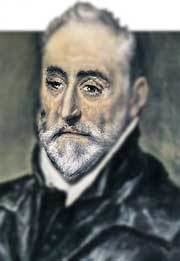Nationality Spanish | Role Architect Name Alonso Covarrubias | |
 | ||
Full Name Alonso de Covarrubias Structures Alcazar of Toledo, Hospital de la Santa Cruz, Toledo | ||
Alonso de covarrubias las mas mejores jajaja d
Alonso de Covarrubias (Torrijos, Toledo 1488 – 1570) was a Spanish architect and sculptor of the Renaissance, active mainly in Toledo.
Contents
- Alonso de covarrubias las mas mejores jajaja d
- De haberlo sabido alonso de covarrubias diciembre 2008
- Works
- References

De haberlo sabido alonso de covarrubias diciembre 2008
Works
Covarrubias works includes:
His first work was associated with Antón Egas and Juan Guas, in a style the transition between late gothic and Plateresque. In the first years of his career he worked principally as a sculptor.
First works as architect:
In Toledo:
Other important Works:
References
Alonso de Covarrubias Wikipedia(Text) CC BY-SA
